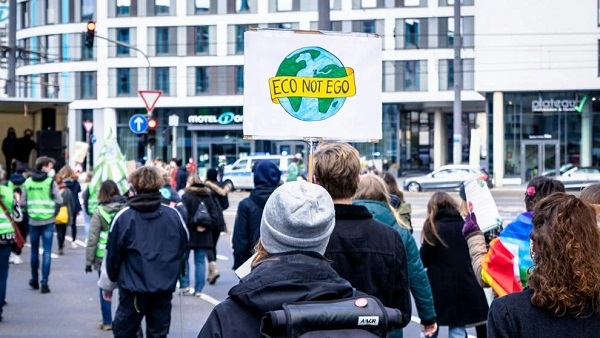Alberta
Alberta School News; Government Makes Temporarily Funding Cuts

Editor’s note; Below are the full press releases from the Alberta Government, CUPE Alberta and the Alberta Teachers Association all from Saturday March 28, 2020 posted in order of release.
Due to COVID-19; K-12 education funding temporarily adjusted in Alberta
With in-school classes cancelled indefinitely, funding for K-12 education is  being temporarily adjusted to reflect the cost of at-home learning by students during the COVID-19 pandemic. This funding will be restored when in-person classes resume.
being temporarily adjusted to reflect the cost of at-home learning by students during the COVID-19 pandemic. This funding will be restored when in-person classes resume.
While funding for teachers and most other aspects of the K-12 system is being maintained, funding for transportation and some services not being utilized in an at-home learning environment, such as substitute teachers and educational assistants, is being temporarily reduced while in-person classes remain cancelled. Any savings from these adjustments will be re-allocated to support Alberta’s COVID-19 response.
These funding adjustments will not negatively impact Alberta’s education continuity plan. School authorities will receive the funding they require to continue providing at-home learning opportunities to their students, ensuring they do not fall behind.
“COVID-19 has changed both how we provide student learning, and the operational needs of the education system. I want to stress that this is a temporary arrangement as schools focus on at-home learning. I have full confidence the system will continue to be equipped to successfully deliver our education continuity plan.” Adriana LaGrange, Minister of Education
Any staff impacted by these funding adjustments will qualify for the federal government’s enhanced employment insurance program and other support programs for Canadian workers.
Alberta has a comprehensive response to COVID-19, including measures to enhance social distancing, screening and testing. Financial supports are helping Alberta families and businesses.
More to come as it become available. Tom Braid
________
Kenney government fires school employees, CUPE warns of brain drain
Education Minister Adriana LaGrange announced today that the Kenney  government was withdrawing funding to school districts for staffing during the last two months of the 2019-20 school year.
government was withdrawing funding to school districts for staffing during the last two months of the 2019-20 school year.
CUPE Alberta President Rory Gill said funding to schools’ base operational grant was being reduced by 14%. Gill believes up to 20,000 employees could lose their employment.
“With a surprise announcement, lacking in detail, on a Saturday afternoon, the Kenney government has just fired thousands of people who look after and educate our kids,” said Gill.
The minister has just passed the buck to the federal government and told education workers, ‘good luck out there, there are programs you can access.’
“CUPE will examine the various collective agreements with school districts to assess the legality of the move but warned that “treating employees so callously would harm the education system.” CUPE Alberta President Rory Gill
“You can’t just fire thousands of Educational Assistants and expect them to all run back to the system in the fall,” said Gill. “This is a recipe for a massive brain drain.”
“Educational assistants can still help students, custodial workers can still be of use, the short-sightedness of this move is breathtaking.”
“We should be helping people keep their jobs during the crisis, not putting front line workers out on the street.”
Alberta
Made in Alberta! Province makes it easier to support local products with Buy Local program

Show your Alberta side. Buy Local. |
When the going gets tough, Albertans stick together. That’s why Alberta’s government is launching a new campaign to benefit hard-working Albertans.
Global uncertainty is threatening the livelihoods of hard-working Alberta farmers, ranchers, processors and their families. The ‘Buy Local’ campaign, recently launched by Alberta’s government, encourages consumers to eat, drink and buy local to show our unified support for the province’s agriculture and food industry.
The government’s ‘Buy Local’ campaign encourages consumers to buy products from Alberta’s hard-working farmers, ranchers and food processors that produce safe, nutritious food for Albertans, Canadians and the world.
“It’s time to let these hard-working Albertans know we have their back. Now, more than ever, we need to shop local and buy made-in-Alberta products. The next time you are grocery shopping or go out for dinner or a drink with your friends or family, support local to demonstrate your Alberta pride. We are pleased tariffs don’t impact the ag industry right now and will keep advocating for our ag industry.”
Alberta’s government supports consumer choice. We are providing tools to help folks easily identify Alberta- and Canadian-made foods and products. Choosing local products keeps Albertans’ hard-earned dollars in our province. Whether it is farm-fresh vegetables, potatoes, honey, craft beer, frozen food or our world-renowned beef, Alberta has an abundance of fresh foods produced right on our doorstep.
Quick facts
- This summer, Albertans can support local at more than 150 farmers’ markets across the province and meet the folks who make, bake and grow our food.
- In March 2023, the Alberta government launched the ‘Made in Alberta’ voluntary food and beverage labelling program to support local agriculture and food sectors.
- Through direct connections with processors, the program has created the momentum to continue expanding consumer awareness about the ‘Made in Alberta’ label to help shoppers quickly identify foods and beverages produced in our province.
- Made in Alberta product catalogue website
Related information
Alberta
Province to expand services provided by Alberta Sheriffs: New policing option for municipalities

Expanding municipal police service options |
Proposed amendments would help ensure Alberta’s evolving public safety needs are met while also giving municipalities more options for local policing.
As first announced with the introduction of the Public Safety Statutes Amendment Act, 2024, Alberta’s government is considering creating a new independent agency police service to assume the police-like duties currently performed by Alberta Sheriffs. If passed, Bill 49 would lay additional groundwork for the new police service.
Proposed amendments to the Police Act recognize the unique challenges faced by different communities and seek to empower local governments to adopt strategies that effectively respond to their specific safety concerns, enhancing overall public safety across the province.
If passed, Bill 49 would specify that the new agency would be a Crown corporation with an independent board of directors to oversee its day-to-day operations. The new agency would be operationally independent from the government, consistent with all police services in Alberta. Unlike the Alberta Sheriffs, officers in the new police service would be directly employed by the police service rather than by the government.
“With this bill, we are taking the necessary steps to address the unique public safety concerns in communities across Alberta. As we work towards creating an independent agency police service, we are providing an essential component of Alberta’s police framework for years to come. Our aim is for the new agency is to ensure that Albertans are safe in their communities and receive the best possible service when they need it most.”
Additional amendments would allow municipalities to select the new agency as their local police service once it becomes fully operational and the necessary standards, capacity and frameworks are in place. Alberta’s government is committed to ensuring the new agency works collaboratively with all police services to meet the province’s evolving public safety needs and improve law enforcement response times, particularly in rural communities. While the RCMP would remain the official provincial police service, municipalities would have a new option for their local policing needs.
Once established, the agency would strengthen Alberta’s existing policing model and complement the province’s current police services, which include the RCMP, Indigenous police services and municipal police. It would help fill gaps and ensure law enforcement resources are deployed efficiently across the province.
Related information
-

 espionage8 hours ago
espionage8 hours agoEx-NYPD Cop Jailed in Beijing’s Transnational Repatriation Plot, Canada Remains Soft Target
-

 2025 Federal Election1 day ago
2025 Federal Election1 day agoNeil Young + Carney / Freedom Bros
-

 2025 Federal Election16 hours ago
2025 Federal Election16 hours agoTucker Carlson Interviews Maxime Bernier: Trump’s Tariffs, Mass Immigration, and the Oncoming Canadian Revolution
-

 Business15 hours ago
Business15 hours agoDOGE Is Ending The ‘Eternal Life’ Of Government
-

 2025 Federal Election15 hours ago
2025 Federal Election15 hours agoCanada drops retaliatory tariffs on automakers, pauses other tariffs
-

 2025 Federal Election1 day ago
2025 Federal Election1 day agoRCMP Whistleblowers Accuse Members of Mark Carney’s Inner Circle of Security Breaches and Surveillance
-

 2025 Federal Election1 day ago
2025 Federal Election1 day agoBureau Exclusive: Chinese Election Interference Network Tied to Senate Breach Investigation
-

 Autism1 day ago
Autism1 day agoRFK Jr. Exposes a Chilling New Autism Reality








